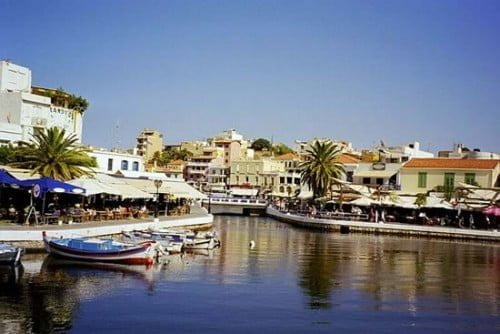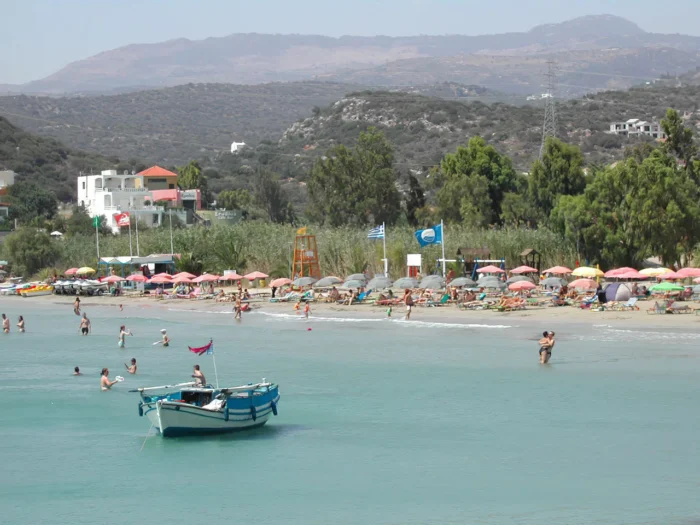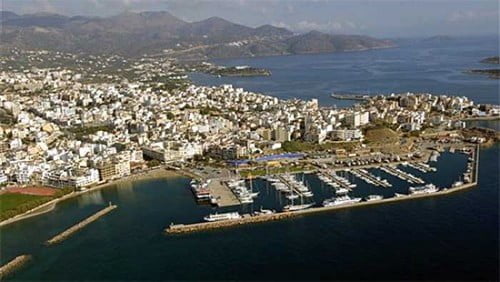The Leper Island of Spinalonga
The Leper Island
In spite of its long and turbulent history, today Spinalonga is mainly known as the Leper Island. In 1903, a leper colony was established on Spinalonga, to isolate people suffering from Hansen’s Disease from the healthy population.
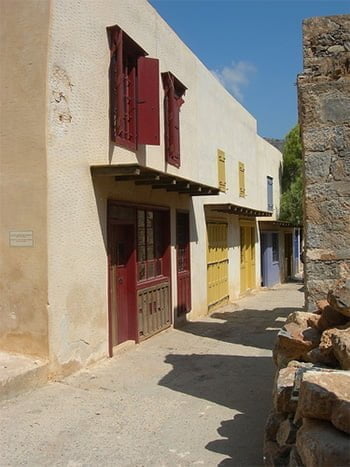
The cure for leprosy had not yet been discovered, and the contagious disease was regarded with horror. Hansenites, as lepers are known, were quarantined in leper colonies outside towns, living off the charity of passers-by.
In Crete the place-name Meskinia, meaning “lazar house”, survives in several places, for instance in Heraklion and Rethymno. In Heraklion it refers to the neighbourhood of Chryssopigi south of Ikarou Avenue, before Poros.
People were terrified of leprosy and lepers had to wear bells to warn people of their approach. It was not known that most of the population is naturally resistant to the disease and that the risk of contagion was much lower than thought. But who would run the risk of catching an incurable, fatal disease?
So a small island was the ideal solution for isolating sufferers from the healthy population, who could thus feel safe. Spinalonga was ideal because it was close to shore, permitting the easy transfer of patients, food and supplies. There were also many empty houses there after the departure of the Muslim inhabitants.
On 30 May 1903 the decision to transform Spinalonga into a leper island was signed, and 250 patients were moved there from various parts of Crete. More came following the unification of Crete with Greece in 1913, while later patients were even brought here from abroad and it was classified an International Leper Hospital.
Leprosy or Hansen’s Disease
Hansen’s Disease is still a scourge today. In many countries, such as Greece, the disease has been eradicated, but this is not true of India, Africa and Latin America.
In 2001, 763,000 new cases of leprosy were recorded, mainly in southeast Asia (668,000), while in 2005 the number of new cases fell to 300,000.
Leprosy is caused by the bacterium Mycobacterium leprae, which is related to the tuberculosis bacterium. This microorganism was discovered by Doctor G. A. Hansen in 1873, which is why leprosy is officially known as Hansen’s Disease.
The disease is contagious through prolonged contact with a sufferer, but most of the population (95%) is naturally immune.
Today leprosy is curable and sufferers can lead a normal life without transmitting the disease. However, the world “leper” still carries a social stigma, and this is the main reason some patients do not seek medical assistance in the early stages of the disease.
Daily life as a leper on Spinalonga
The patients of Spinalonga were entitled to a small monthly allowance, which was often not enough to cover their food and medicine. These were hard times, when Greece was rocked by successive wars (Macedonian Struggle, two Balkan Wars, two World Wars, the Civil War), worsening the position of the lepers on Spinalonga. Living conditions were extremely poor, and some lepers’ accounts paint a picture of utter squalor.
The great change came about in 1930, when Epameinondas Remoundakis was brought to Spinalonga. Remoundakis was a third-year law student when he fell ill, and he seems to have been the person the others were waiting for in order to demand humane living conditions.
“We were together, he was a great man and the terrible disease had condemned him to blindness and losing a hand…” – Manolis Foundoulakis
“As you walk around Spinalonga, stop and hold your breath. From some hovel nearby you will hear the echo of a mother’s or sister’s lament or a man’s sigh. Shed a couple of tears from your eyes and you will see the sparkle of the millions of tears that have drenched this road.” – Epameinondas Remoundakis
So the houses of Spinalonga were whitewashed after many years of decay, the road around the island was opened, a outdoor cleaning service was set up, a theatre and cinema were built, and classical music was heard from the loudspeakers in the street.
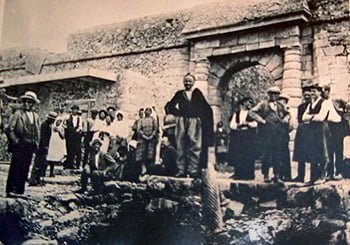
People fell in love and were married on Spinalonga. They had children, some of whom grew up with them without ever catching the disease.
They looked after one another, did any work they could to improve their lives, ran their own kafeneion and barber shop, and had their own church of St Panteleimon, with a brave priest who, though not a leper himself, volunteered to spend his life among the exiles.
The “Fraternity of Patients of Spinalonga” founded by Remoundakis played a decisive part in the improvement of living conditions. Life on the Leper Island began to be more like that they had left behind when they had been forced to leave their homes and move to Spinalonga.
From 1948 onwards, when the cure for this dreadful disease was discovered, the number of lepers on Spinalonga fell.
The Leper Hospital remained operational until 1957, when the last 20 patients were moved to a leper hospital in Athens. Many others had recovered and gone home in the meantime.
Afterwards Spinalonga was abandoned and looted, and many pieces of architecture from its houses now adorn the luxury hotels of Elounda.
© explorecrete.com All Rights Reserved. Reproduction or copying without permission is prohibited.



